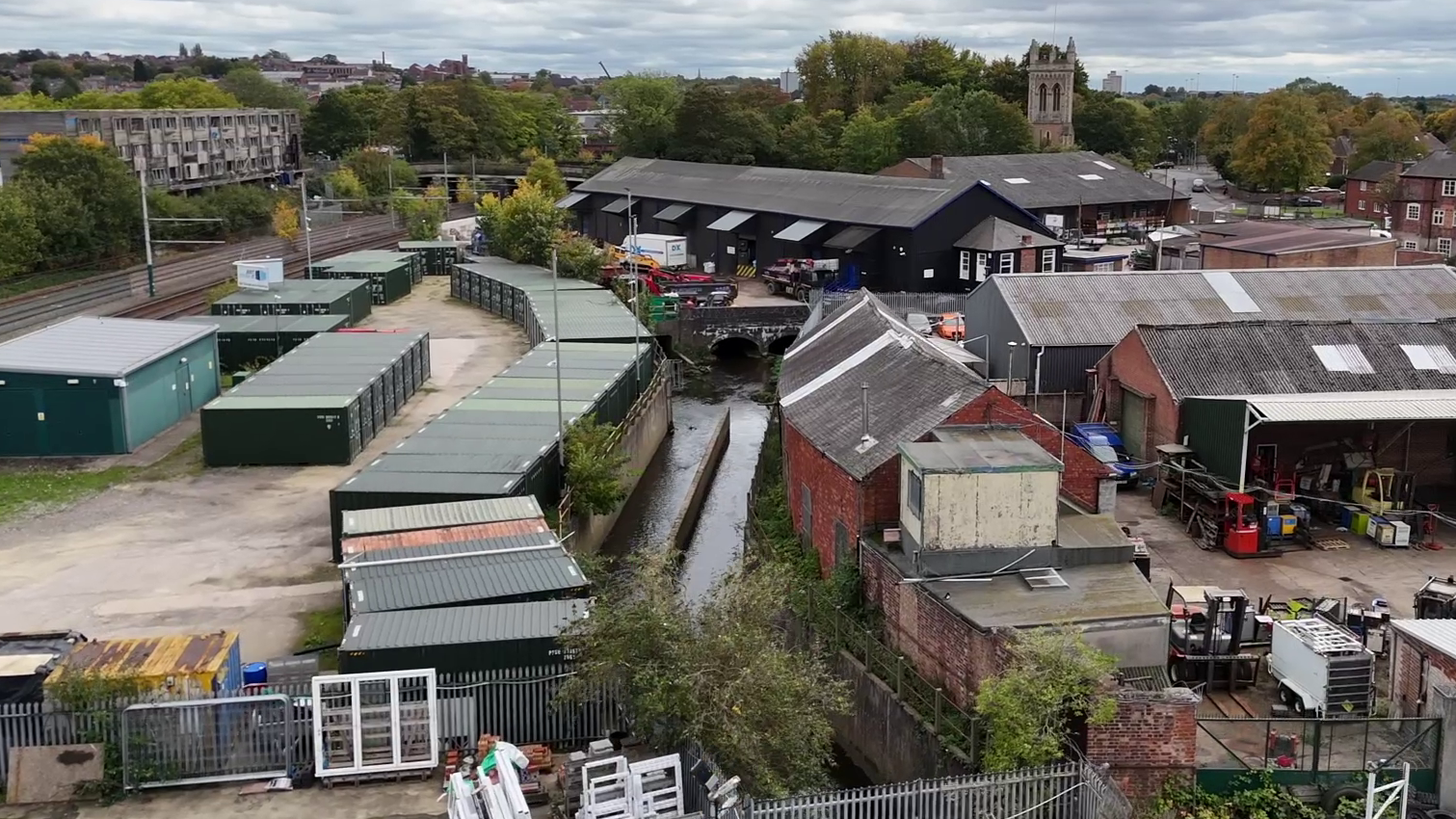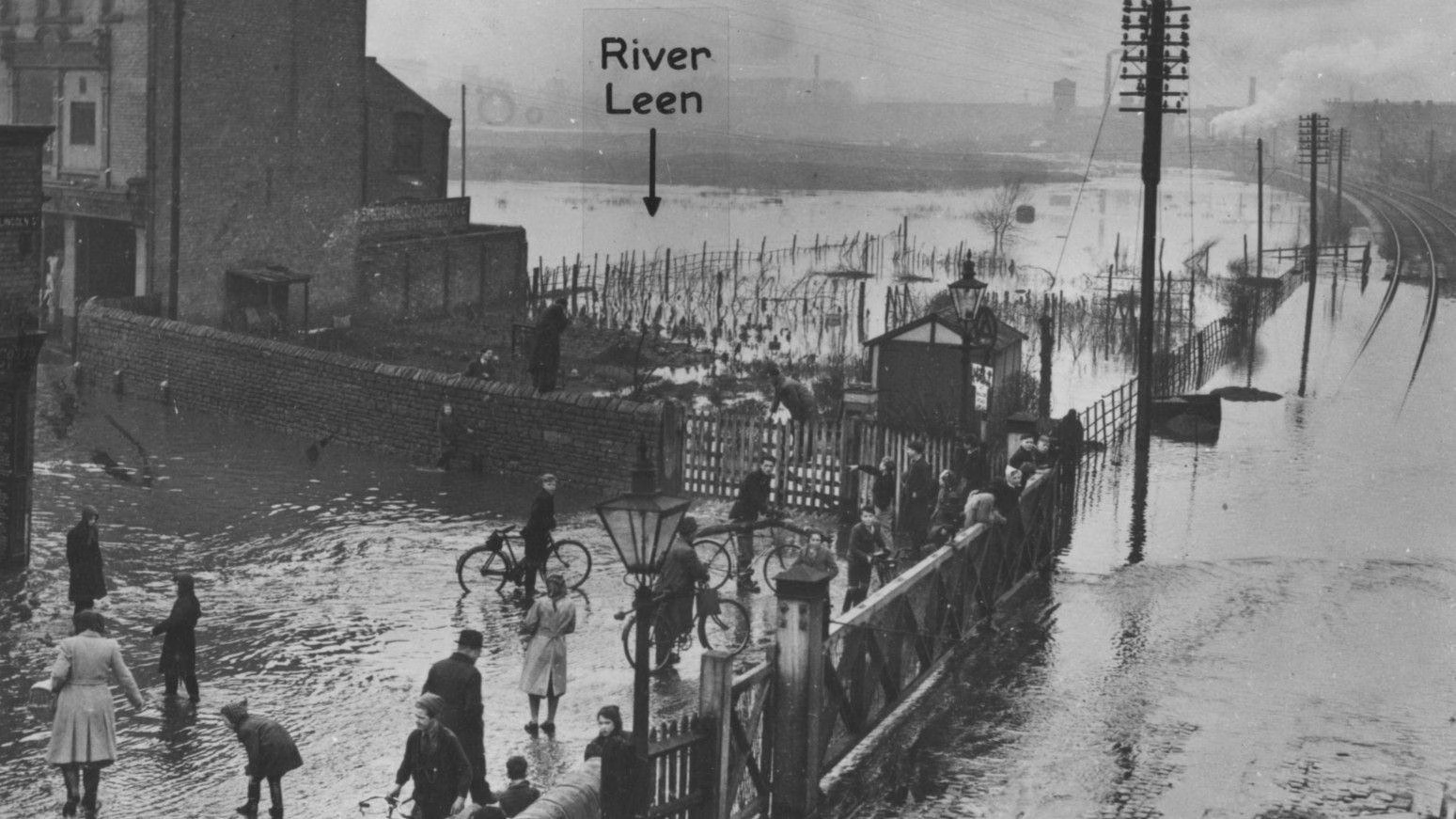The Hidden Power of a Forgotten River in Nottingham
The Hidden Legacy of the River Leen
The River Leen has played a significant role in shaping the history and development of Nottingham. From providing water to villages, supporting industrial growth, and influencing political boundaries, the river has been a vital part of the region’s story. However, despite its importance, it often takes a backseat to its larger neighbor, the River Trent. Researchers at the University of Nottingham are now working to change that perception.
The River Leen flows from Newstead Abbey through Papplewick and Linby, entering the city via Bulwell, Basford, and Lenton before joining the River Trent. Dr. Rachel Dishington and Dr. David Beckingham, who have organized an exhibition on the river, believe it deserves more recognition and appreciation. They emphasize that while the River Trent is important to Nottingham’s history, the Leen is uniquely tied to the city and its surrounding areas.
A Historical Perspective

The first recorded mention of the River Leen dates back to the Domesday Book in 1086, highlighting its significance in early medieval times. The corn mills along its banks were key to the river’s historical value. Dr. Beckingham notes that while the river has a long geological history, the earliest written records are nearly a thousand years old. Holding these historical documents gives researchers a sense of connection to the past, revealing insights into land use, management systems, and the ways people interacted with the environment.
Industrialization and Its Impact

The 18th century brought both opportunities and challenges for the River Leen. As industrialization took hold, the river became a hub for factories and new industries. This led to the expansion of Nottingham as people moved westward to find space. The river also served as a critical source of power for these emerging industries. However, this growth came at a cost.
The Challenges of Urban Growth

Unplanned urban expansion led to serious issues, particularly with sewage. Industrial waste and household refuse were often dumped directly into the river, creating health concerns for residents. Dr. Beckingham explains that authorities struggled to manage this pollution, as there was little control over how waste flowed downstream. This problem prompted early efforts to reorganize local governance and expand Nottingham’s boundaries.
Infrastructure and Environmental Management

In 1877, an Act of Parliament expanded Nottingham’s boundaries to include upstream villages, helping to address the growing environmental challenges. A year later, the Corporation of Nottingham leased land to build sewage works, which still operate today under Severn Trent Water. These developments laid the foundation for modern water management in the city.
Flood Risk and the River Leen Improvement Scheme

By the 1940s, flooding had become a major concern for residents along the River Leen. In 1947, a severe flood affected thousands of homes and businesses, prompting the creation of the River Leen Improvement Scheme in the 1960s. This ambitious project aimed to reduce flood risks by altering the river’s course and managing water flow more effectively.

The improvement scheme cost £1,800,000 by 1973, far exceeding initial estimates. Much of the work involved culverting the river, using concrete channels to fit it around other infrastructure. The project disrupted many local businesses, including a notable incident where Queen Elizabeth II visited the Raleigh site. A note from that time reads, “While the Queen is visiting can we keep the building work quiet?”
Legacy and Future Prospects

Dr. Dishington highlights the significance of the 1960s improvement scheme, noting that it was driven by a commitment to the environment and the community. The infrastructure built during this period, such as the New Road Bridge and culverts in the Derby Road area, still exists today.

Despite its historical importance, much of the River Leen remains hidden beneath concrete and infrastructure. Dr. Beckingham points out that living near water can improve health, but visibility is key to enjoying it. He also emphasizes the ecological impact of barriers in the river, which may hinder its natural function.
Connecting Past and Future

For Dr. Beckingham, studying the past is not just about historical interest; it reveals insights into the present and future. Understanding how the River Leen shaped Nottingham helps communities envision its potential role moving forward. Dr. Dishington agrees, stating that knowing the river’s historical significance is essential for imagining how it could serve future generations.
Exhibition and Community Engagement

Their research, supported by the University of Nottingham’s Manuscripts and Special Collections department, is currently on display at the Weston Gallery in Lakeside Arts, Nottingham. The exhibition will run until 15 March 2026, offering visitors a chance to explore the rich history of the River Leen and its ongoing impact on the city.
- Wabup Sigi Temani Menteri Transmigrasi Pantau Pembangunan Kampus Patriot di Bolupontu - December 19, 2025
- Prediksi 50 Soal Asesmen Nasional Bahasa Inggris SD Kurikulum Merdeka 2026 Beserta Kunci Jawaban - December 19, 2025
- Bisakah 7 Suplemen Ini Membantu Anda Mengelola Esofagitis Eosinofilik (EoE)? - December 19, 2025




Leave a Reply